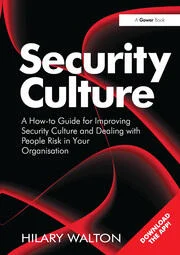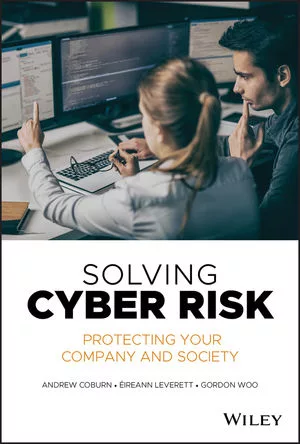The Internal Blast Radius of Ransomware Attacks: Why Cyber Resilience Must Start with People

FlyD via Unsplash
Whenever a new ransomware attack strikes, headlines and industry discussions will understandably center on the number of operational days lost to disruption, volumes of data stolen, and projected costs. This stands to reason as ransomware attacks have a very real and visible impact on customers, investors, and other stakeholders in undermining trust, damaging reputations, and potentially leading to significant financial consequences.
However, alongside the highly visible disruption tearing through the company’s operations, attacks also carry with them the risk of emotional strain, burnout, and attrition of staff.
In the aftermath of an attack, this human impact inside the company can often be overlooked. Although visibility of the psychological effect of stress on security leaders and teams is growing, comparatively little is said about the emotional effects of an attack on the very people responsible for defending the enterprise.
Too many cyber resilience strategies are built to restore systems, not people. Unless organizations also start investing in human resilience with the same rigor as their digital defenses, they’ll find themselves weakened and vulnerable long after the incident is contained.
The Quiet Crisis Afflicting Cyber Leadership
The buck for any perceived cybersecurity failure usually stops with the CISO, which means it’s a position operating under relentless pressure. This burden is becoming increasingly unsustainable as legal scrutiny and personal liability continue to grow. Recent research found that one in four CISOs plans to quit due to stress, while more than half are open to leaving. It’s a statistic that should alarm any boardroom, particularly for a specialist role in a field suffering a long-standing skills and recruitment gap.
Additionally, the average CISO tenure has dropped to just 18–26 months. Stress levels are soaring due to extreme workloads, insufficient resources, and the psychological toll on leaders of being held accountable for events beyond their control.
CISOs routinely work extended hours while managing a complex tangle of tools and escalating cyberthreats. The research also indicates that almost all (98%) of CISOs work beyond contracted hours, with some averaging as many as 16 additional hours a week.
Yet their success remains invisible — too often they are judged not by what they stop, but by what slips through. Even without a serious crisis, burnout is inevitable when so much time is spent fighting fires.
With most ransomware attacks combining encryption with data exfiltration, security leaders face the prospect of customer and IP data being misused by criminals long after the initial attack is resolved. Factor in the looming threat of being held liable for a serious ransomware incident that could cripple the company, and it’s little surprise so many are reviewing their options.
How Ransomware Ripples Through the Workforce
While CISOs will naturally bear the brunt of a security incident, the negative impact can extend far beyond the leadership level. The Ransomware Victim Experience, an in-depth study by defense think tank RUSI and the University of Kent, chronicled the impact on personnel. The long hours working in close quarters required to combat and remediate an attack were found to potentially inflict PTSD-like symptoms, including anxiety and insomnia.
One financial firm reported that key IT staff went on sick leave repeatedly post-crisis, and leadership later admitted a short decompression break might have prevented “months and months” of disruption.
Cyberattacks don’t just compromise systems — they also compromise confidence. Without structures in place to manage that internal strain, organizations risk hollowing out their workforce from the inside. Cyber resilience isn’t just a set of tools and policies; it’s also a personnel strategy — one that is often missing.
Building a Culture That Supports and Retains Security Talent
Most incident response plans are built to restore infrastructure, but not people. In the same way we plot operational tolerances and system recovery plans, resilience must include the capacity to support staff under sustained pressure. This means embedding employees’ wellbeing into response frameworks, including providing access to mental health support, scheduling decompression time, and ensuring clear, empathetic communication during crises.
Organizations can also look to proactively build resilience ahead of a crisis. Programs like those from CyberMindz, modelled on healthcare and military training, help teams manage the human cost of high-stakes work. If we train teams to manage systems under pressure, we should train them to manage themselves, too.
We also need to see a shift in the way security breaches are framed. CISOs are often held accountable without sufficient authority, budget, or support — a setup that invites failure. When things go wrong, the default response is to assign blame rather than examine broken structures.
Resilient organizations include CISOs in strategic conversations, not just compliance updates, and shift from punitive post-mortems to debriefs that acknowledge both technical and emotional strain. There must be an opportunity to make meaningful progress after a breach and bring in improvements, from employee training to deploying next-generation solutions like anti data exfiltration (ADX) to mitigate the threat of extortion and data breaches.
This approach keeps CISOs from becoming a scapegoat when things go wrong and stops talent walking out the door.
How to Protect Your People During the Next Attack
Protecting and supporting people during a crisis can be better managed with the right policies and structures in place.
Establishing cross-functional response teams can help share the burden, while clear, transparent communication channels throughout the incident will stop security teams from feeling isolated.
Senior leaders not only need to review technical shortcomings but also examine how teams coped and what could be improved next time. Resilience isn’t just about the immediate recovery; it’s about building and improving the organization’s readiness in the longer term for any incident that may strike.
Ransomware is a security issue with a human cost, and it’s evident that cyber resilience must also go beyond infrastructure and compliance. It demands the organizational strength to sustain people under pressure. That means treating burnout as a system warning, and wellbeing as a business-critical priority.
A truly resilient organization doesn’t just bounce back. It protects its people, preserves its expertise, and recovers stronger. In the next breach, your best defense won’t only be the solutions you have in place, it will also be the team behind it.
Looking for a reprint of this article?
From high-res PDFs to custom plaques, order your copy today!







